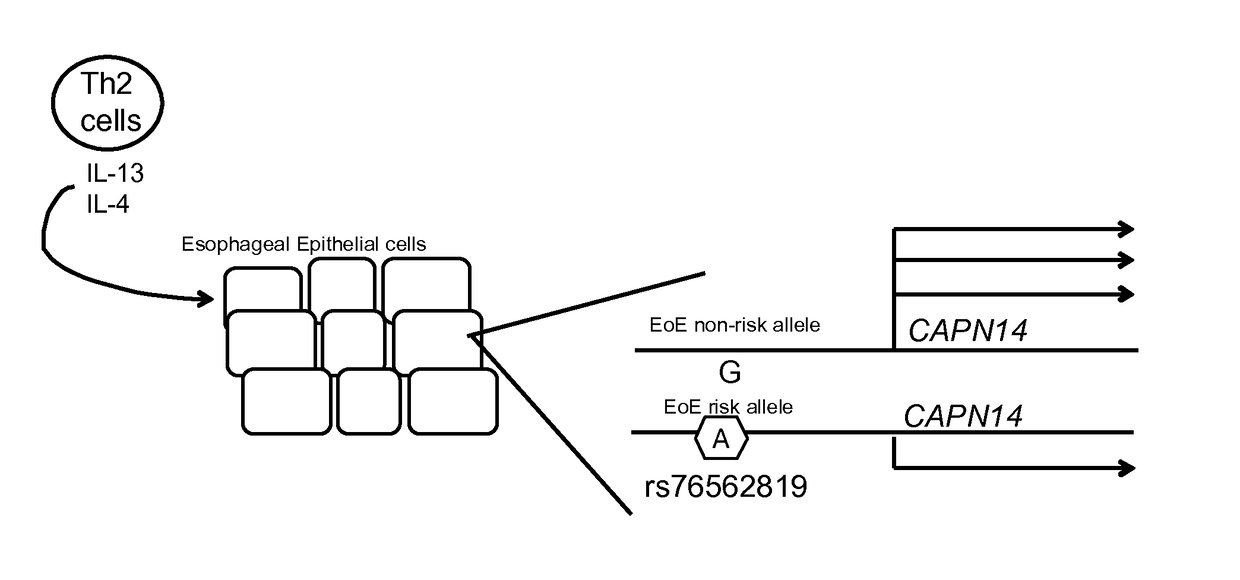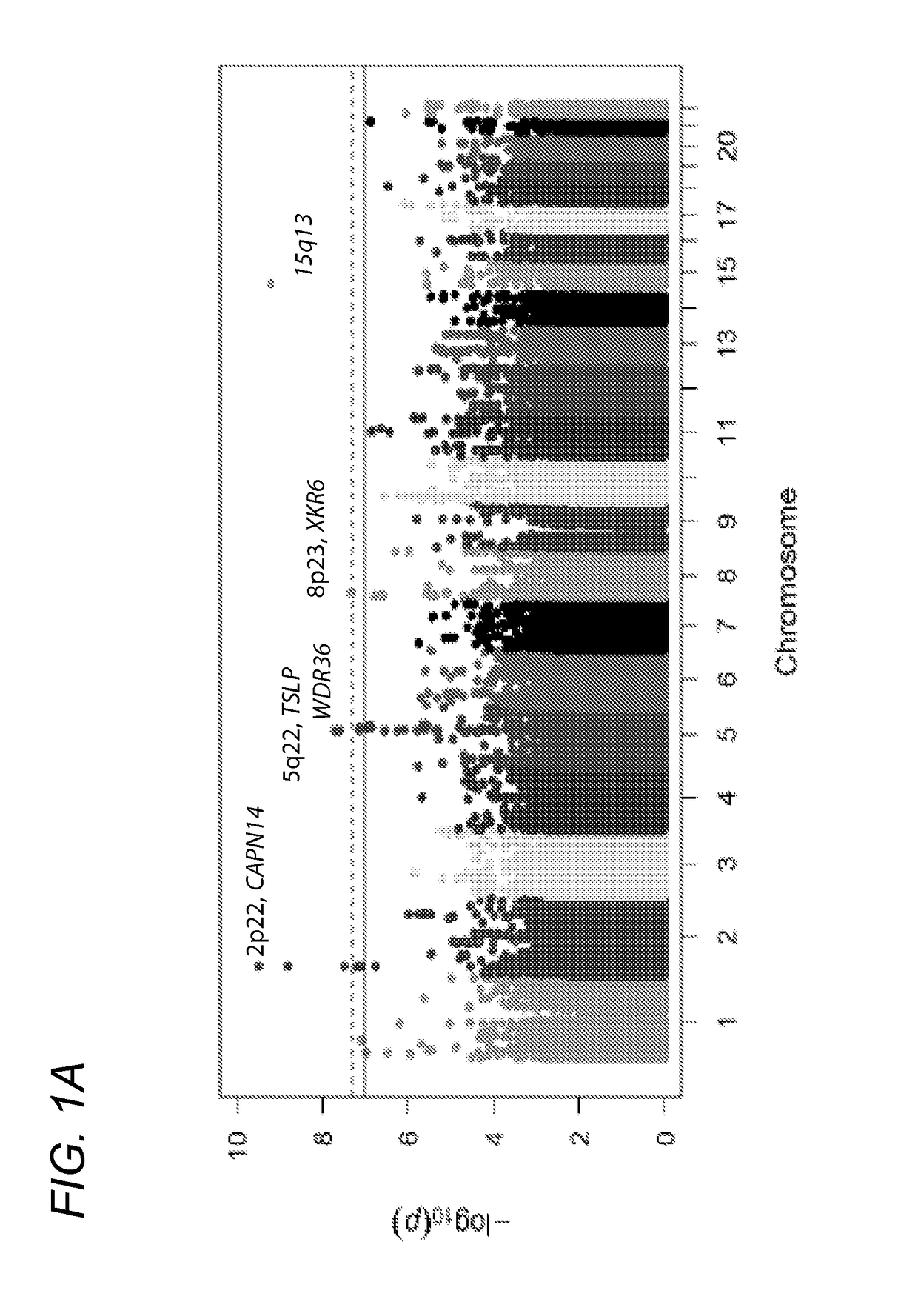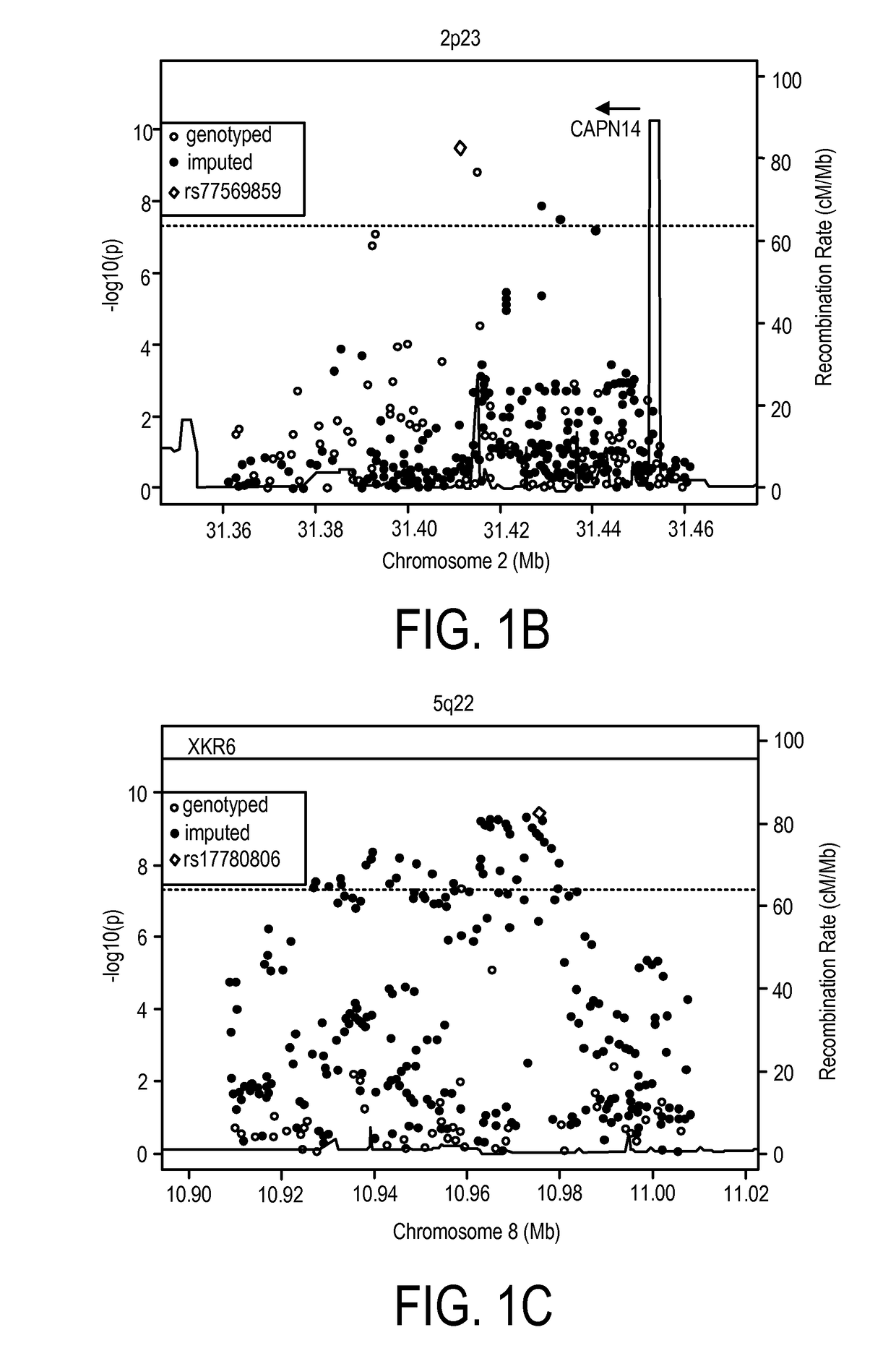Genetic Test for Determining Susceptibility for Eosinophilic Esophagitis
- Summary
- Abstract
- Description
- Claims
- Application Information
AI Technical Summary
Benefits of technology
Problems solved by technology
Method used
Image
Examples
example 1
Study Population
Subjects
[0146]The study was approved by the Institutional Review Boards at Cincinnati Children's Hospital Medical Center (CCHMC) and all participating sites that were part of the NIH Consortium of Food Allergy Research EoE Cohort (Mount Sinai Medical Center, University of North Carolina, Johns Hopkin's University, University of Colorado Health Center / National Jewish Research Center, and Arkansas Children's Hospital). Parental informed consent was obtained from all participants in this study for the purpose of DNA collection and genotyping.
[0147]Cases were confirmed by a physician to fulfill the diagnostic criteria for EoE. EoE is defined as peak eosinophil count ≧15 eosinophils / high-power field in esophageal biopsy sections; 30% of CCHMC and 51% of CoFAR patients had PPI therapy before the diagnostic endoscopy. Control subjects (non-EoE) included the self-reported Caucasian subjects in the Cincinnati Genomic Control Cohort CCHMC (n=831, age range 2-18 years) (Prahala...
example 2
[0149]Genotyping was performed on the Illumina OMNI-5 and OMNI-2.5 genotyping arrays (Illumina, San Diego, Calif.) using Infinium2 chemistry. Genotypes were called using the Gentrain2 algorithm within Illumina Genome Studio.
Genotyping Quality Control
[0150]To confirm accurate genotyping and sample identification, an identity-by-state analysis was performed on a subset of 10,732 SNPs that were genotyped on both the Illumina OMNI-5 and the previous GWAS platform (Illumina 550) (Rothenberg, M. E. et al. Nat Genet 42:289-91 (2010)); this analysis found 99.998% concordance between the 134 samples that were genotyped on both platforms. Of the original 4,301,332 markers on the OMNI-5, 2,512,766 were derived from rare variants (−4), and upon visual inspection, 124 SNPs did not cluster properly. The rs11819199 SNP reached genome-wide significance; however, no other SNPs around this variant in the dataset were strongly associated. The Genome-Studio cluster plot of this part...
example 3
RNA Analyses
[0153]Quantitative real-time PCR analysis was performed on cDNA from distal esophageal biopsy RNA. EoE biopsies showed active disease pathology at the time when they were taken, and all patients reported no glucocorticoid treatment at the time of biopsy, except for the analysis of gene expression as a function of disease activity in which remission was defined after glucocorticoid therapy. Statistical testing for mRNA expression normalized to glyceraldehyde 3-phosphate dehydrogenase (GAPDH) was determined by Mann-Whitney U test using GraphPad Prism software.
Expression Microarray Analysis
[0154]For each patient, one distal esophageal mucosal biopsy sample was immersed in RNAlater RNA stabilization reagent (QIAGEN, Venlo, Limberg, Netherlands) and stored at 4° C. for less than 15 days. Total RNA was extracted using RNeasy Mini Kit (QIAGEN) according to the manufacturer's recommendations. Hybridization to DNA microarray was performed by the Microarray Core...
PUM
| Property | Measurement | Unit |
|---|---|---|
| minor allele frequencies | aaaaa | aaaaa |
| frequencies | aaaaa | aaaaa |
| heat map | aaaaa | aaaaa |
Abstract
Description
Claims
Application Information
 Login to View More
Login to View More - R&D
- Intellectual Property
- Life Sciences
- Materials
- Tech Scout
- Unparalleled Data Quality
- Higher Quality Content
- 60% Fewer Hallucinations
Browse by: Latest US Patents, China's latest patents, Technical Efficacy Thesaurus, Application Domain, Technology Topic, Popular Technical Reports.
© 2025 PatSnap. All rights reserved.Legal|Privacy policy|Modern Slavery Act Transparency Statement|Sitemap|About US| Contact US: help@patsnap.com



